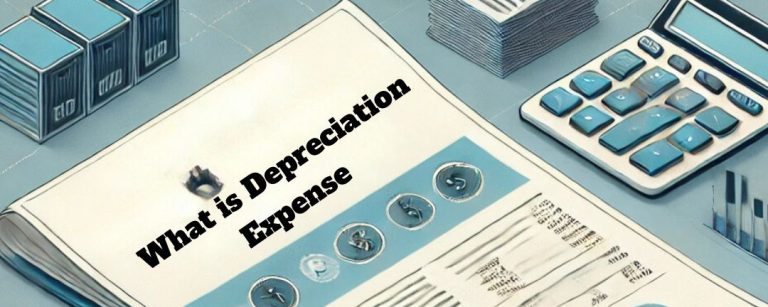The cost of any tangible fixed asset is depreciated and allocated over the useful life. It represents an accounting method to reflect how the value of an asset has reduced over time as it ages and gets used. The depreciation expense is reported in the income statement of the company, which enables businesses to allocate the cost of an asset such as machinery or equipment or vehicles in accordance with their usage and tear.
What Is Depreciation?
The depreciation procedure is the process of deprecating the cost incurred on a tangible fixed asset over its useful life. It is applied to assets that are physical in nature and have a limited life expectancy, such as buildings, machines, vehicles, and computers. Depreciation also accounts for the value decline associated with these assets as the result of wear and tear, obsolescence, and age.
Key Points About Depreciation
- Non-Cash Expense: Depreciation is a non-cash expense, meaning no actual cash flow occurs when depreciation is recorded, but it impacts the financial statements.
- Asset Value Reduction: The asset’s book value decreases over time to reflect its diminished worth.
- Methods of Depreciation: Different methods can be used to calculate depreciation, such as straight-line, double-declining balance, and units of production.
Why Depreciation Matters?
- Accurate Financial Reporting: Depreciation helps provide a more accurate picture of a company’s profits by matching the cost of assets with the revenue they generate over time.
- Tax Benefits: Depreciation provides tax deductions for businesses, allowing them to write off the cost of assets over time.
In summary, depreciation is a fundamental concept in accounting that helps businesses account for the loss in value of physical assets and ensures proper expense allocation.
Depreciation Overview
Depreciation is imperative to businesses in matching up asset usage with corresponding costs that help in the exact computation of profits and payments of the right amount of taxes. The process goes like this: the beginning cost of an asset is figured out, and then the asset is spread over its life so that it will lose value to either usage, wear, or market conditions.
Depreciation in Financial Statements
- Income Statement: Depreciation expense is recorded as an operating expense on the income statement. This reduces the company’s taxable income and, consequently, its tax liability.
- Balance Sheet: The accumulated depreciation is subtracted from the asset’s original cost to reflect its net book value on the balance sheet.
Common Methods of Depreciation
- Straight-Line Depreciation
- This method spreads the cost of the asset evenly over its useful life. For example, if a machine costs $10,000 and has a useful life of 5 years, the depreciation expense each year would be $2,000.
- Formula:
- Double Declining Balance Depreciation
- This method accelerates depreciation, recognizing higher expenses in the early years of the asset’s life. This can be beneficial for businesses that want to lower their taxable income early on.
- Formula:
- Units of Production Depreciation
- This method ties depreciation to actual usage or output. If the asset is used more in certain periods, its depreciation expense for those periods will be higher.
- Formula:
Depreciation and Business Planning
- Cash Flow Management: Although depreciation is a non-cash expense, it can influence business decisions related to cash flow, capital budgeting, and tax planning.
- Asset Replacement: Understanding the rate at which assets depreciate helps businesses plan for future asset replacements or upgrades.
Depreciation and Taxes
One of the most important things about depreciation expense is that it has implications for taxes. Depreciation allows businesses to recover the cost of tangible assets over time, which in turn reduces taxable income and tax obligations.
How Depreciation Affects Taxes?
- Tax Deduction: Depreciation is considered a tax-deductible expense. This means businesses can lower their taxable income by recording depreciation on assets, reducing the amount of taxes they owe.
- Accelerated Depreciation: Businesses often use methods like the double-declining balance method to accelerate depreciation in the early years of an asset’s life. This increases deductions in the early years and can lead to significant tax savings.
- Depreciation Schedules: The IRS provides specific guidelines on how different types of assets should be depreciated, often based on predetermined schedules.
- Example: An asset like office furniture might be depreciated over a period of 7 years, while computers might have a shorter depreciation schedule of 5 years.
Tax Considerations
- Capital Gains: When an asset is sold, any depreciation previously taken may be recaptured, and the business may need to pay taxes on the amount of depreciation taken during the asset’s life.
- Section 179 Deduction: The IRS allows businesses to expense the entire cost of certain assets in the year they are purchased, rather than depreciating them over time. This deduction is subject to limits, but it can be beneficial for small businesses.
In conclusion, depreciation plays a vital role in business tax planning, helping reduce current tax burdens while enabling businesses to allocate expenses in a way that matches the asset’s usage.
Depreciation in Accounting
Depreciation in accounting is a systematic allocation of the cost of tangible assets over their useful life. Depreciation expense is recorded on the income statement, while the corresponding accumulated depreciation is shown on the balance sheet. This will ensure that businesses reflect the cost of their assets as used, rather than trying to take an entire expense upfront.
Importance of Depreciation in Accounting
- Matching Principle: Depreciation aligns with the matching principle in accounting, which requires that expenses be recorded in the same period as the revenues they help generate. This prevents distortion of profits.
- Tax Deductions: As discussed, depreciation helps businesses lower their taxable income, thus reducing the amount of taxes they owe.
- True Asset Value: The accumulated depreciation on the balance sheet provides an accurate reflection of an asset’s book value, showing its reduced worth as it ages.
Depreciation’s Role in Financial Reporting
- Income Statement: Depreciation expense appears under operating expenses, reducing the net income for the period.
- Balance Sheet: The net book value of an asset is calculated by subtracting accumulated depreciation from the asset’s original cost.
Example of Depreciation in Accounting
Let’s say a company buys a piece of equipment for $50,000 with a useful life of 5 years and no salvage value. The annual depreciation using the straight-line method would be:
Each year, $10,000 would be deducted from the equipment’s value on the balance sheet and recorded as an expense on the income statement.
Conclusion
In simple terms, depreciation expense is the spread of an asset’s cost over its useful life. Depreciation enables businesses to reflect wear and tear on their assets more accurately, while tax benefits are available in the form of decreased taxable income. Different methods include straight-line and double-declining balance methods for calculating depreciation, and each method has its benefits. Knowledge of how depreciation works is therefore important in financial reporting as well as for effective tax planning.
What is Depreciation Expense ? FAQs
What is Depreciation Expense?
Depreciation expense refers to the gradual allocation of an asset’s cost over its useful life, reflecting the reduction in its value as it is used over time.
What is the difference between depreciation and amortization?
While depreciation applies to tangible assets like machinery and buildings, amortization applies to intangible assets, such as patents or copyrights.
How does depreciation affect taxes?
Depreciation allows businesses to reduce their taxable income by deducting the cost of assets over time, lowering the taxes they owe.
What are the most common methods of calculating depreciation?
The most common methods of calculating depreciation are straight-line depreciation, double-declining balance, and units of production.
How does depreciation impact financial reporting?
Depreciation affects financial reporting by reducing the book value of assets on the balance sheet and decreasing net income on the income statement.


